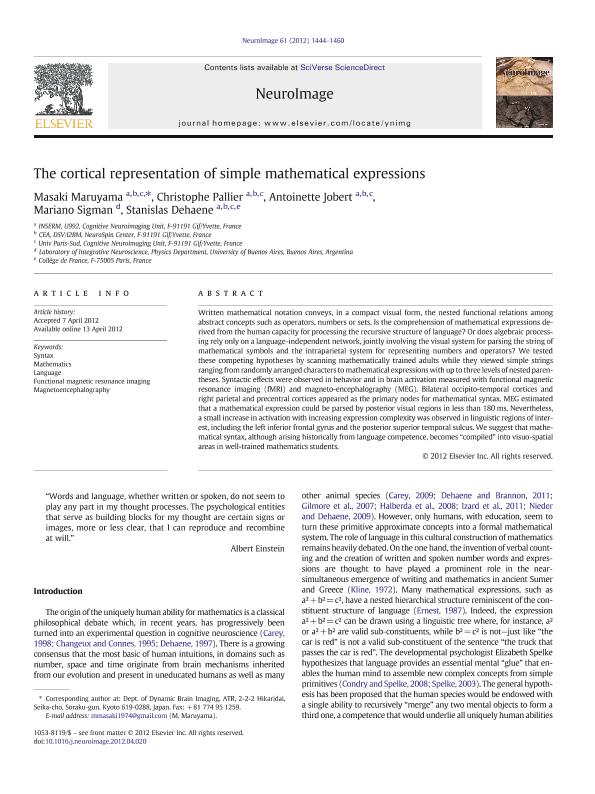Artículo
The cortical representation of simple mathematical expressions
Fecha de publicación:
04/2012
Editorial:
Academic Press Inc Elsevier Science
Revista:
Journal Neuroimag
ISSN:
1053-8119
Idioma:
Inglés
Tipo de recurso:
Artículo publicado
Resumen
Written mathematical notation conveys, in a compact visual form, the nested functional relations among abstract concepts such as operators, numbers or sets. Is the comprehension of mathematical expressions derived from the human capacity for processing the recursive structure of language? Or does algebraic processing rely only on a language-independent network, jointly involving the visual system for parsing the string of mathematical symbols and the intraparietal system for representing numbers and operators? We tested these competing hypotheses by scanning mathematically trained adults while they viewed simple strings ranging from randomly arranged characters to mathematical expressions with up to three levels of nested parentheses. Syntactic effects were observed in behavior and in brain activation measured with functional magnetic resonance imaging (fMRI) and magneto-encephalography (MEG). Bilateral occipito-temporal cortices and right parietal and precentral cortices appeared as the primary nodes for mathematical syntax. MEG estimated that a mathematical expression could be parsed by posterior visual regions in less than 180. ms. Nevertheless, a small increase in activation with increasing expression complexity was observed in linguistic regions of interest, including the left inferior frontal gyrus and the posterior superior temporal sulcus. We suggest that mathematical syntax, although arising historically from language competence, becomes "compiled" into visuo-spatial areas in well-trained mathematics students. © 2012 Elsevier Inc.
Archivos asociados
Licencia
Identificadores
Colecciones
Articulos(IFIBA)
Articulos de INST.DE FISICA DE BUENOS AIRES
Articulos de INST.DE FISICA DE BUENOS AIRES
Citación
Maruyama, Masaki; Pallier, Christophe; Jobert, Antoinette; Sigman, Mariano; Dehaene, Stanislas; The cortical representation of simple mathematical expressions; Academic Press Inc Elsevier Science; Journal Neuroimag; 61; 4; 4-2012; 1444-1460
Compartir
Altmétricas




